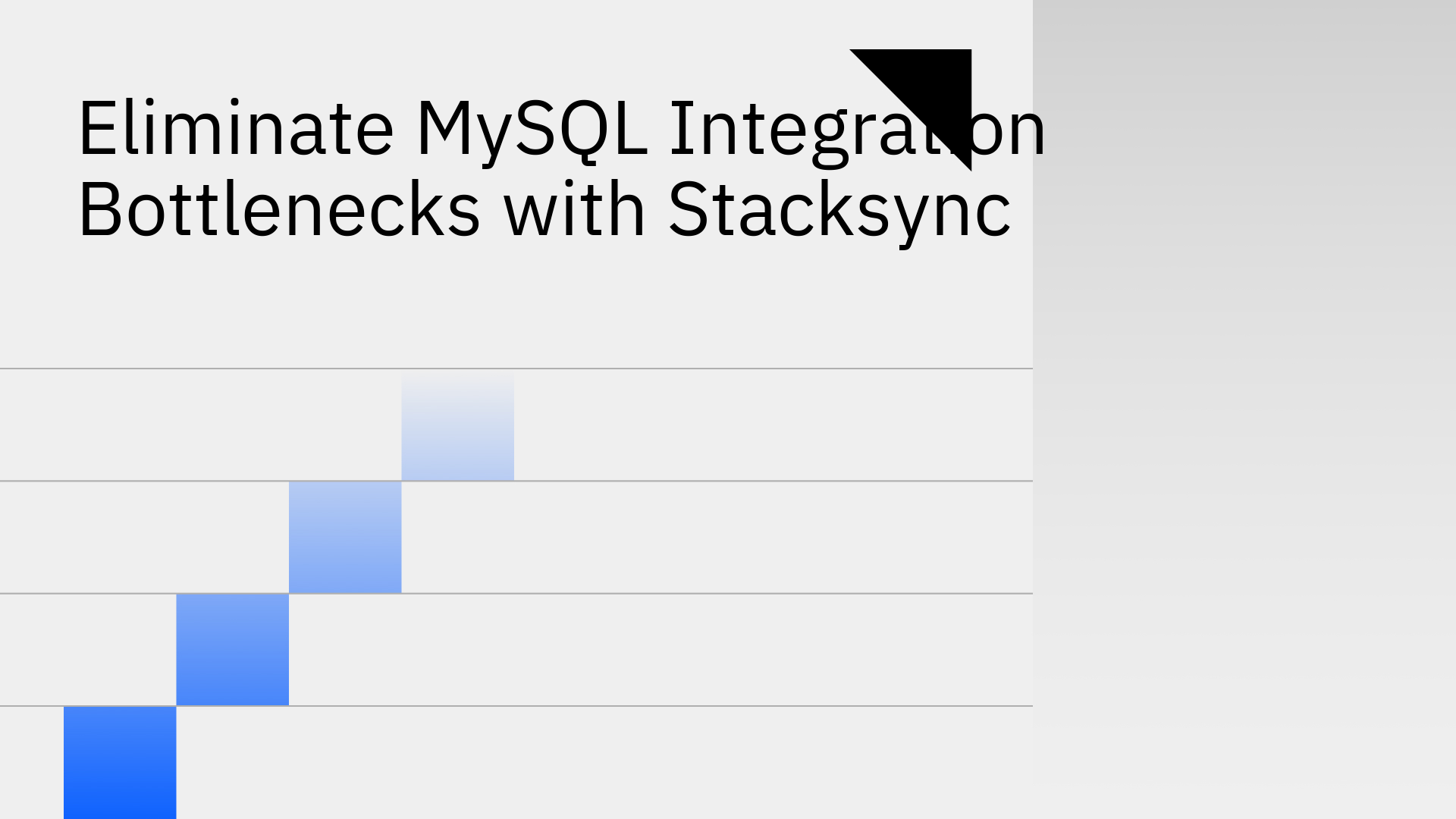
MySQL serves as the transactional backbone for countless business applications, from websites to critical backend systems. While powerful, integrating MySQL with a modern stack of CRMs, ERPs, and SaaS tools often creates performance issues.
These mysql real time integration bottlenecks, such as data latency from batch processing, API rate limits, and the complexity of maintaining custom code, prevent businesses from operating efficiently. Stacksync provides a modern solution engineered to eliminate these challenges through real-time, two-way data synchronization.
An integration bottleneck is any point in the data pipeline that slows or halts the flow of information between your MySQL database and other systems. These issues prevent businesses from achieving true real-time operations, leading to outdated analytics, poor customer experiences, and inefficient workflows. The root cause often lies in outdated integration methods that cannot meet the demands of a modern data stack [4].
Traditional integration methods, like ETL scripts that run on a schedule, create significant data latency. This means data in one system can be hours or even a day behind another. For example, a support agent might view a customer's order history in a CRM that has not yet synced with recent transactions from the MySQL database. This delay prevents teams from making informed decisions and highlights the need for real-time analytics instead of delayed reports [1].
Many integrations rely on polling APIs to check for data changes between MySQL and cloud applications. This inefficient approach frequently leads to hitting API rate limits imposed by services like Salesforce or HubSpot, causing syncs to fail. The consequences are incomplete data, operational disruptions, and an unreliable data ecosystem that erodes trust in your most critical business information.
Building and maintaining custom integration scripts to connect MySQL is a resource-intensive task. It involves high initial development costs and requires ongoing engineering effort for maintenance, updates, and bug fixes. These custom solutions are often brittle and can easily break when an application’s API is updated or data schemas change, diverting valuable engineering resources from core product development.
Stacksync is the modern solution to these persistent problems, built for real-time performance and reliability. Our platform replaces brittle custom code and slow batch jobs with a resilient, scalable, and fully managed platform. With Stacksync, you can build robust data workflows that empower your teams with consistent, real-time information across your entire organization.
Stacksync provides real-time, bidirectional synchronization to ensure data consistency across all systems. Instead of slow batch jobs, we use modern techniques like Change Data Capture (CDC) to detect and sync data changes in milliseconds, not hours [3]. By capturing every INSERT, UPDATE, and DELETE event as it happens, our MySQL two-way sync integration and workflow automation ensures your database and connected apps are always in perfect sync.
Our platform features a Smart API Management system that intelligently orchestrates API calls, automatically adjusting to traffic and respecting the quotas of each connected system. This prevents sync failures caused by API throttling and ensures a continuous, reliable data flow without manual intervention. This core principle helps our customers fix integration bottlenecks across their entire tech stack, regardless of the application.
Contrast the complexity of custom scripts with the simplicity of Stacksync’s no-code setup. Engineers can configure a robust MySQL integration in minutes through an intuitive interface. Stacksync handles all the underlying infrastructure—including scaling, event queues, and monitoring—freeing up developers to focus on core business logic instead of integration plumbing. Our MySQL documentation provides all the technical details for a seamless setup.
Stacksync eliminates "silent sync failures" with our proactive Issue Management dashboard. The platform provides real-time alerts and a centralized interface to view, diagnose, and resolve any sync issues. You can retry or revert failed syncs with a single click, guaranteeing data integrity between MySQL and your other applications and delivering the reliability required for mission-critical workflows.
Common mysql real time integration bottlenecks—data latency, API throttling, and high maintenance—limit business agility. Stacksync’s real-time two-way sync, smart API management, and scalable no-code platform directly solve these problems. By empowering your business to build reliable, real-time data workflows, Stacksync turns your MySQL database into a connected, dynamic asset that drives your business forward.
Ready to eliminate your integration bottlenecks? Schedule a demo with a cloud architect or start your free 14-day trial today.